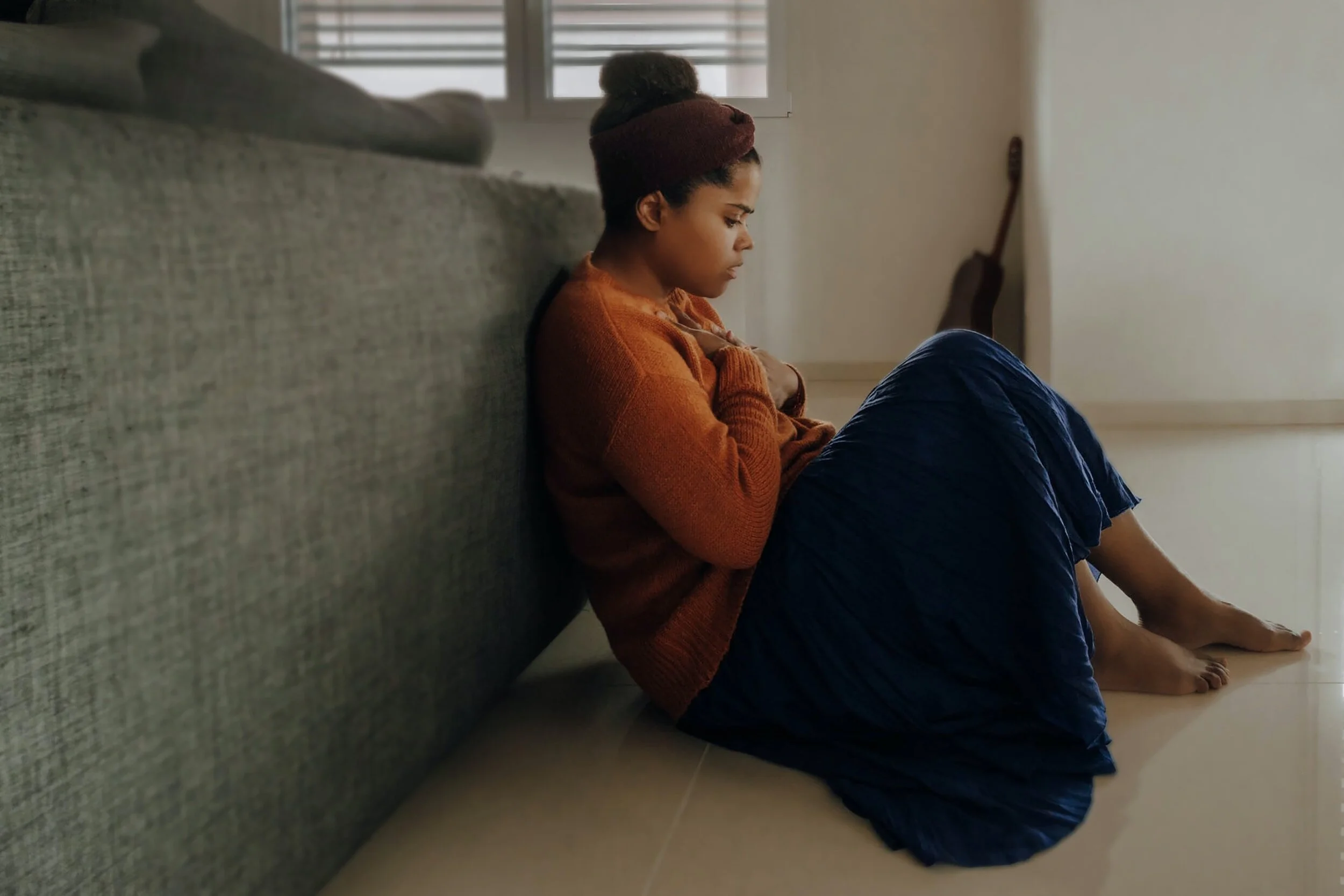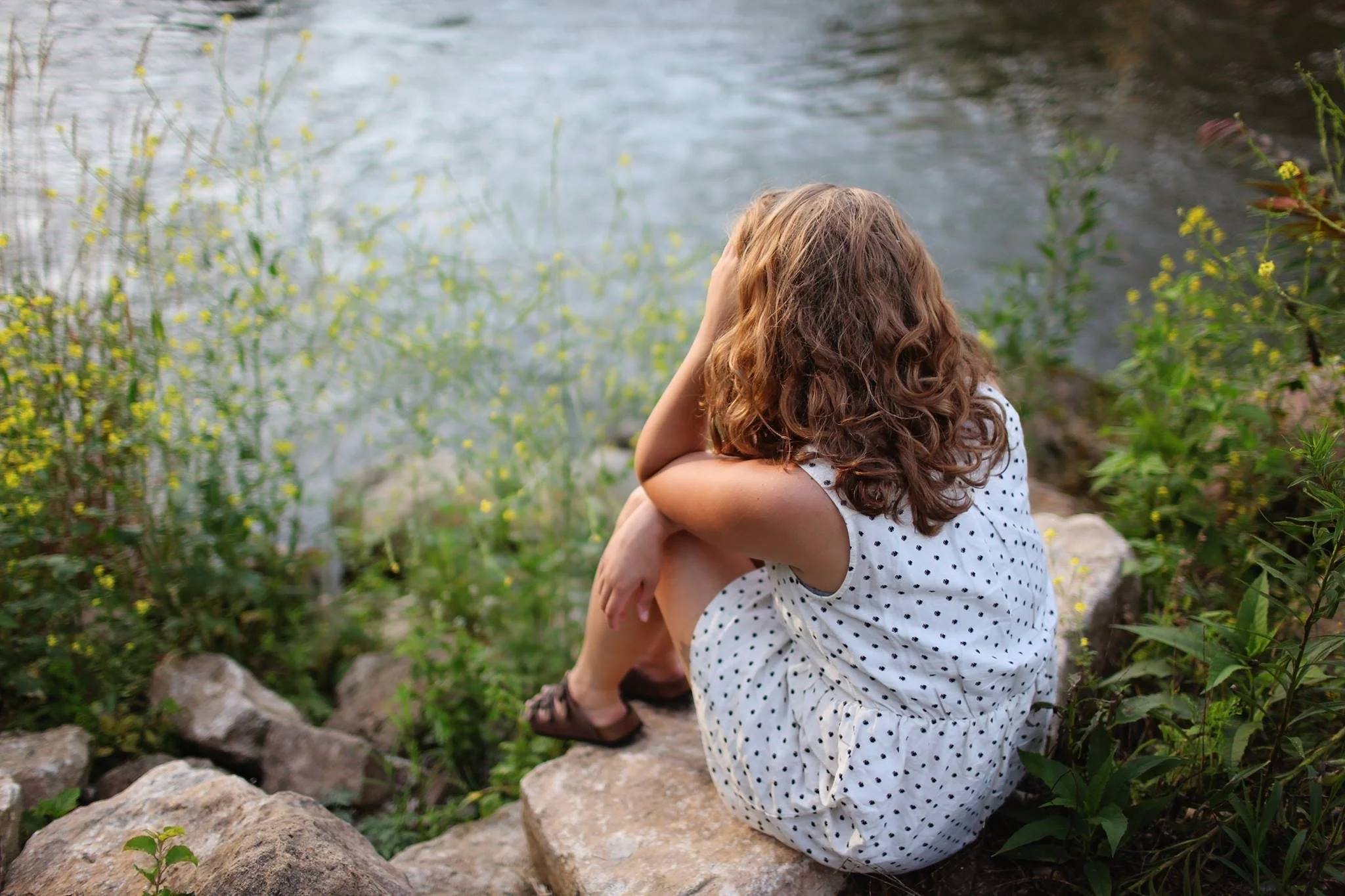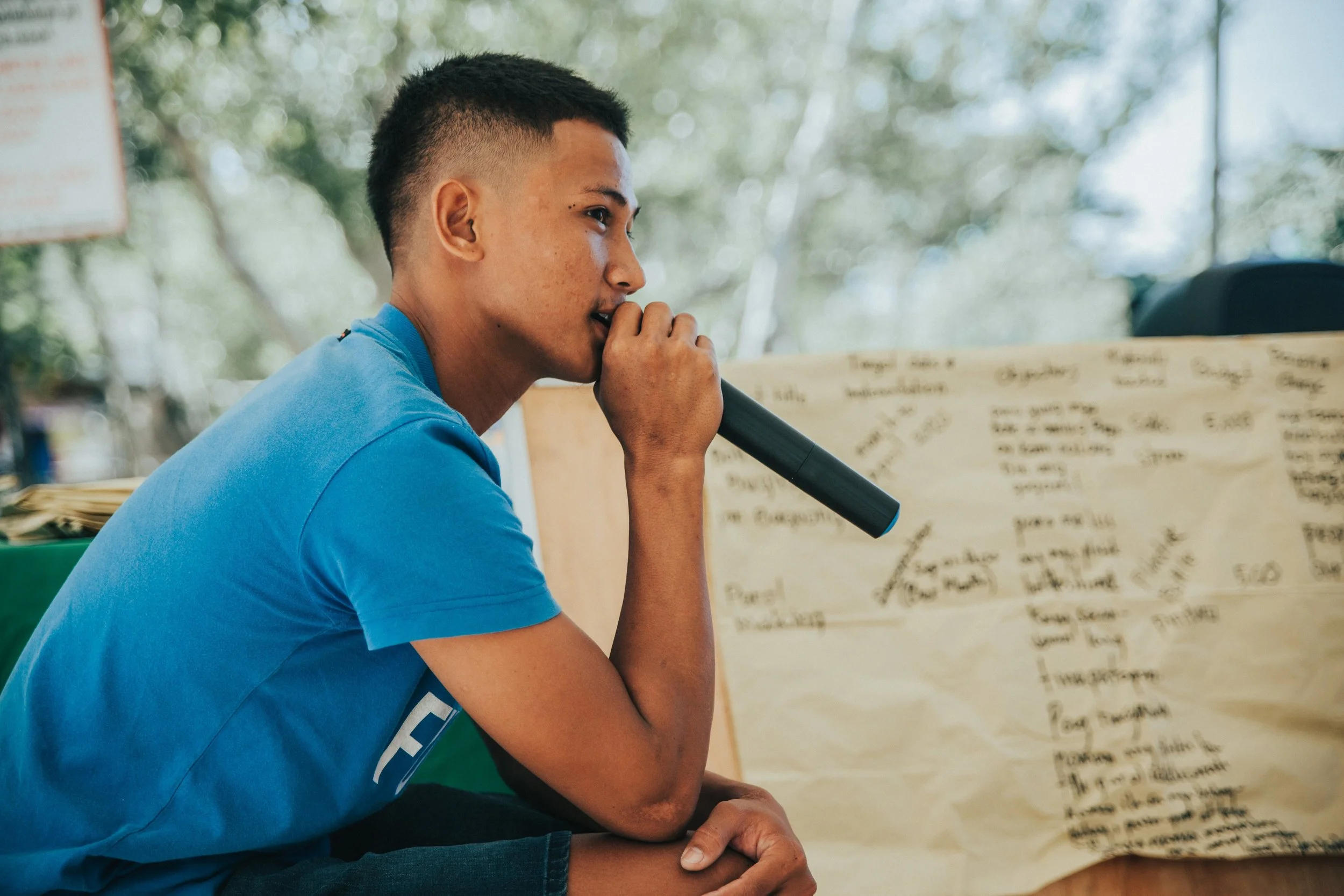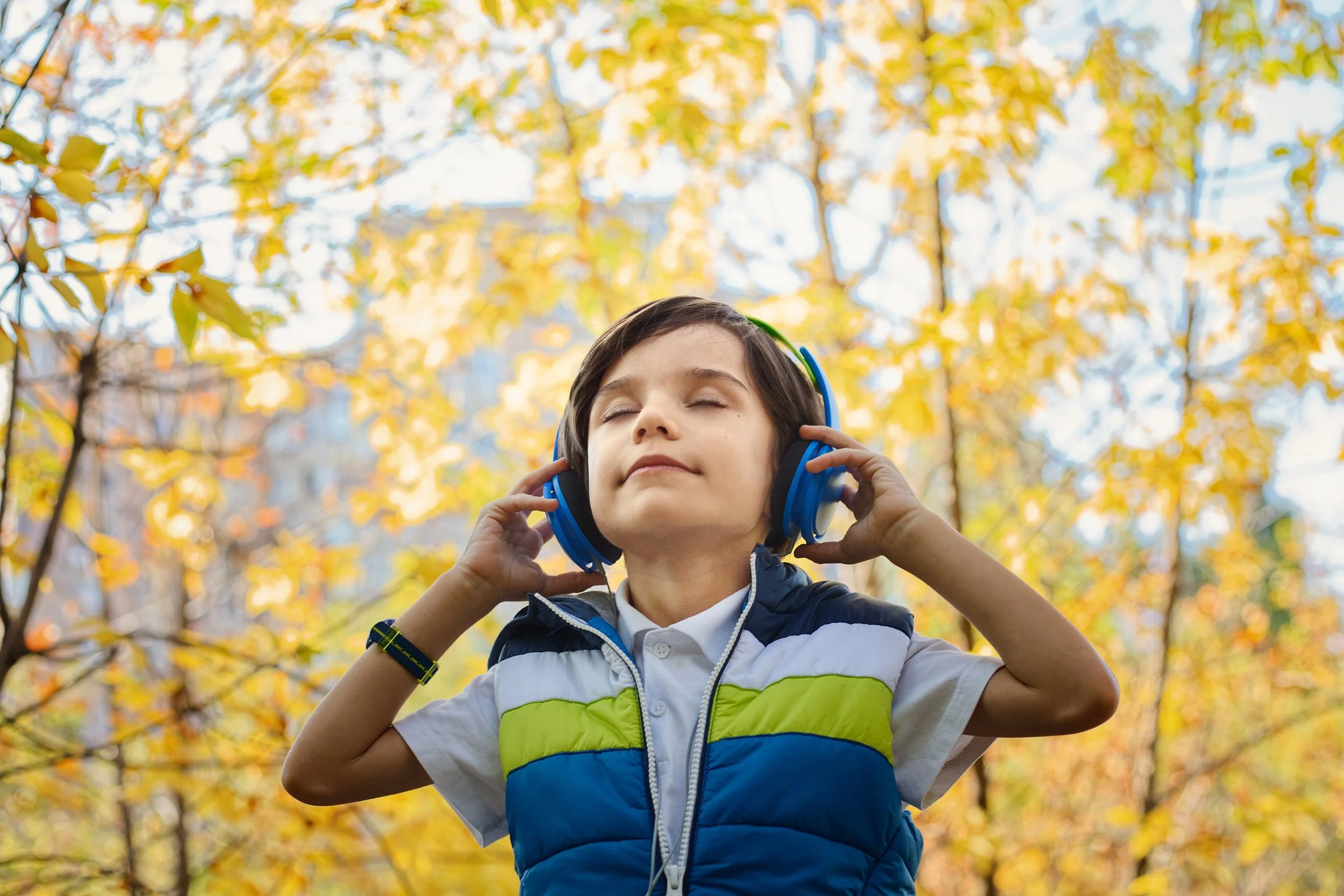Anxiety isn’t exclusive to adults: children can experience it, too. Childhood anxiety, while often underestimated, is a very real and prevalent concern. Research suggests that 1 in 8 American kids suffers from some form of anxiety, and that 25% of kids will have symptoms at some point during their teen years. We also know that childhood anxiety is on the rise: some studies show that anxiety rates have doubled over the last few years, possibly due to a combination of pandemic stress, social media exposure, and world events.
As a therapist, what concerns me most is that many of these children—40%—are not getting treatment for their anxiety. And as a parent, I imagine you want to make sure you’re not missing any symptoms! It’s perfectly normal for kids to experience stress and worries in the course of day to day life, and it’s not always easy to tell when those more typical worries are evolving into something more.
In this guide, I’ll cover the 5 most common anxiety disorders experienced by children. You’ll learn the basics of each anxiety type, including its prevalence, common symptoms, and examples of how these symptoms might look in kids. We’ll wrap up by talking about how you can make sure your child gets effective help if they’re struggling with anxiety.
1. Specific Phobia: Most Common Overall (and Rarely Discussed)
How Common Is It? Hands down, this is the most common anxiety disorder that affects children and teens—and yet I rarely see content about it online! Around 7-9% of children have a diagnosable phobia, and the National Institute of Mental Health says that 19.1% of teens will have a phobia at some point in their lives!
What Are the Symptoms? Children with this disorder have an overwhelming fear of a particular thing or situation—hence the “specific” part of the name. Their fear is out of proportion to the trigger: often, the thing or scenario they’re afraid of is not actually dangerous at all. Children with phobias will go out of their way to avoid being around or even thinking about the thing that scares them.
Examples of Phobias in Kids: Animals, blood, needles, clowns, and bugs are all very common phobias in kids and teens. However, any object, animal, or situation can become the source of a phobia. Here are a few examples:
Sofia and her mother are in a standoff about scheduling her annual physical. Sofia is terrified of needles and doesn’t want to get vaccines or a blood draw during her doctor visit. Last year she was only able to cope by holding her mother’s hand, but since then she’s avoided even talking about getting a shot.
Even though he’s never been bitten by one, Jackson is terrified of dogs. He won’t visit the houses of friends who have dogs unless they are kept outside while he’s there. If he encounters a dog while walking in the neighborhood, he makes the family turn around and take a different route.
Cecilia has asked to stay home from an upcoming family vacation because she dreads flying on airplanes. She often has panic attacks while on the plane, and needs a lot of support from both her parents in order to get through. The trip is still weeks away, but Cecilia is already getting anxious about the flight.
Good to Know: It’s common for kids to experience temporary fears after watching a scary movie, having a negative or traumatic experience, or even after participating in Halloween events. These fears tend to resolve on their own in days or weeks, whereas phobias stick around and may even worsen over time.
2. Generalized Anxiety Disorder (GAD): Prevalent in Tweens and Teens
How Common Is It? Generalized Anxiety Disorder (also called GAD) is one of the most common forms of childhood anxiety, especially for older kids. Estimates vary, but approximately 2.9-4.6 percent of American kids would qualify for this diagnosis.
What Are the Symptoms? Kids with GAD experience overwhelming, frequent worries about a variety of subjects, like school, health, safety, and family. The worrying occurs most days and gets in the way of a child’s life, potentially making it harder to focus at school or go to bed at night. Kids with GAD often complain of bodily symptoms like muscle tension, headaches, and stomach aches, and may feel irritable, as well.
Examples of GAD in Kids: If your child or teen is dealing with Generalized Anxiety, these examples may feel familiar to you:
Julian has a hard time unwinding at night because he can’t seem to turn off his worried mind: each night, he vents about a variety of subjects to his mom including school shootings, homework stress, and letting down his team in basketball. He knows he worries a lot, but he’s still not sleeping well.
Maya often stops by the school nurse’s office complaining of headaches or tummy aches, but doctors haven’t found anything wrong. At home she often seems tense—physically and emotionally—and often snaps at her mom. Things are calm in Maya’s life, but she often asks “what if” questions about worst-case scenarios.
Lulu has always been a worrier: the topics change, but the habit of worrying remains the same. Recently, though, things have taken a turn: Lulu is worrying so much that her attention drifts from her work at school. She’s having a hard time focusing, and her grades have dropped a bit.
Good to Know: Kids with GAD often have other mental health diagnoses, too. GAD is common in children with ADHD, depression, and other types of anxiety like Separation Anxiety.
3. Separation Anxiety Disorder: Common in Young Children
How Common Is It? Separation anxiety is the most common form of anxiety in young children. About 2-5% of kids under the age of 12 experience it. Older kids can have separation anxiety, too, but it’s not quite as common.
What Are the Symptoms? Kids with separation anxiety are fearful of being away from their parent or primary caregiver. They often worry that something bad will happen to themselves or their loved one while they are apart. It’s common for kids to miss their parents, but for children with this disorder, the fear is so intense that it can cause physical symptoms or prevent them from participating in age-appropriate activities.
Examples of Separation Anxiety Disorder in Kids: The main symptom of separation anxiety is pretty clear—kids are nervous to be away from Mom or Dad! Even so, this disorder can look quite different from kid to kid. Here are a few examples:
12-year-old Bella is the only one of her friends who has never been on a sleepover. She hates feeling left out, but the idea of being away from her mom overnight is just too frightening. Every time she considers going, she imagines having an emergency while she’s gone, without her mom there to help.
Oliver started preschool this year but hasn’t attended very many times. He often tells his mom he has a stomach ache in the morning, and asks to stay home. His mom has noticed these tummy aches only appear on school mornings, and never on the weekend. Oliver has a harder time at drop off than most of his friends, and takes longer to recover from his upset.
Jaci’s mom has worked from home for years, and just started going back to the office a few days a week. Jaci has an epic tantrum every time her mom has to leave the house. When asked, Jaci said she worries her mom will get into a car accident on the way to work and won’t come back.
Good to Know: Some separation anxiety is a normal —and even healthy—part of child development. To qualify for a diagnosis of Separation Anxiety Disorder, a child’s symptoms need to be long-lasting (more than a month) and be more intense than what is expected given a child’s age.
4. Social Anxiety Disorder: Not Just Shyness
How Common Is It? Most estimates agree that between 3 and 6% of kids have Social Anxiety Disorder, making it one of the most common forms of childhood anxiety. It tends to affect teens more than younger children, and may be more common in girls than in boys.
What Are the Symptoms? Children with Social Anxiety Disorder aren’t really afraid of socializing: they have an intense fear of being embarrassed, humiliated, or judged by others. They may avoid activities where they could be observed or judged, refuse to participate in class, or worry excessively about offending other people. Physical symptoms include blushing, trembling, and an increased heart rate.
Examples of Social Anxiety in Kids: A kid can be friendly and outgoing and still experience severe social anxiety in certain situations. Here are some examples of social anxiety signs to look out for:
Jeremiah arrives home from school starving every day because he refuses to eat in the cafeteria with his peers. The idea of people watching him eat makes him anxious. Although he enjoys sports, he’s started to hang back in gym class due to concerns that his classmates will be watching him there, too.
Natalia’s biggest worry in life is that other people are judging her or talking about her behind her back. She describes feeling like she’s being watched when she’s riding the bus or walking in the halls at school. Her worries have gotten so bad that she dreads the ride to school in the morning and class changes during the day.
Although he’s an excellent student, Hugo asks to stay home whenever he’s due to present a project in class. As soon as he gets to the front of the room his hands become sweaty, his body shakes, and he feels so lightheaded he worries he could faint.
Good to Know: A history of being bullied, trouble with social skills, and general shyness can all contribute to developing social anxiety. However, plenty of kids with Social Anxiety Disorder don’t have any of these risk factors.
5. Obsessive-Compulsive Disorder: Frequently Overlooked
How Common Is It? Less common than others on this list, OCD is estimated to affect around 1-3 percent of children. Technically, it’s also not quite an anxiety disorder: it gets its very own category in the DSM-5, the manual therapists use to diagnose mental health conditions. Due to its sneaky symptoms, however, OCD is commonly overlooked or mistaken for other forms of anxiety.
What Are the Symptoms? OCD involves the presence of unwanted and upsetting thoughts, called obsessions, as well as repetitive behaviors, called compulsions. Kids with OCD get stuck in a vicious cycle of obsessive thoughts or worries, which they try to manage through their compulsive behavior. Common obsessions include fears of contamination, harm, or moral wrongdoing, while compulsions may manifest as repetitive hand washing, checking, or counting.
Examples of OCD in Children: OCD in real life doesn’t always look the way it does in the media. Kids and teens with OCD are no more likely to be clean or organized than anybody else! To add to the confusion, some compulsive behaviors are invisible: mental rituals like counting, checking, and praying aren’t always noticeable to others. A child with OCD may experience difficulties like these examples:
Nina is very concerned about locking the front door whenever her family leaves the house, for fear that a robber could break in while they are away. Nina meticulously locks the door and checks it several times before heading out. Within a few minutes, though, she doubts whether she really locked the door, and often returns home to double check.
Sasha learned about germs and handwashing during Covid, and got very worried about possibly having germs on his hands during that time. Since then, his handwashing habits have gotten more frequent and more extreme. Sasha often leaves class to wash his hands, and his skin is chapped and dry from frequent washing.
Gracie has repeated worries that she might have said or done something during the day to offend or upset her friends. In order to help herself feel better, she confesses anything she fears might have gone wrong to her mom. Gracie’s mom wants to be supportive, but the confessing is happening more and more often, even though Gracie knows she didn’t really do anything wrong.
Good to Know: Kids with OCD are often aware that the thoughts they’re having are “weird” or unusual. This causes a lot of distress, and sometimes prompts children to avoid sharing worries or try to disguise their compulsions.
Treatment for Children and Teens with Anxiety Disorders
The statistics around childhood anxiety are intimidating: so many kids are suffering, and relatively few are getting help! Knowledge is power, however, and being able to identify when a child’s symptoms go above and beyond “normal” worries is a great first step toward supporting an anxious child. There are many treatment options available to help kids manage anxiety and get back to living a healthier, happier life.
Cognitive Behavioral Therapy is often considered the “gold standard” for childhood anxiety treatment because it has loads of research to back up its effectiveness. CBT therapy tends to be skills focused, with an emphasis on solving problems as they exist now rather than delving into the past to figure out their origins. Kids in CBT therapy can expect to learn coping skills to relax their bodies, deal with unhelpful worries, and face the fears they may be avoiding in day-to-day life.
Play therapy is another popular treatment option, especially for younger kids who may not feel comfortable sitting still and talking to a strange adult about their problems. Young children naturally use play to work through their feelings and understand the world around them. Play therapy allows children to tap into this innate ability, rather than putting all the emphasis on verbalizing thoughts and feelings. In play therapy, you can expect your child to use make-believe, art, and imaginative play to express themeslves and work through their feelings over time, with support from a counselor who knows how to interpret their activities from a psychological perspective.
I offer both play and CBT therapy in my Davidson, NC office, and also meet virtually with clients throughout North Carolina, Florida, and New York. If you’re looking to get your child started in anxiety therapy, you can reach out to me here.




